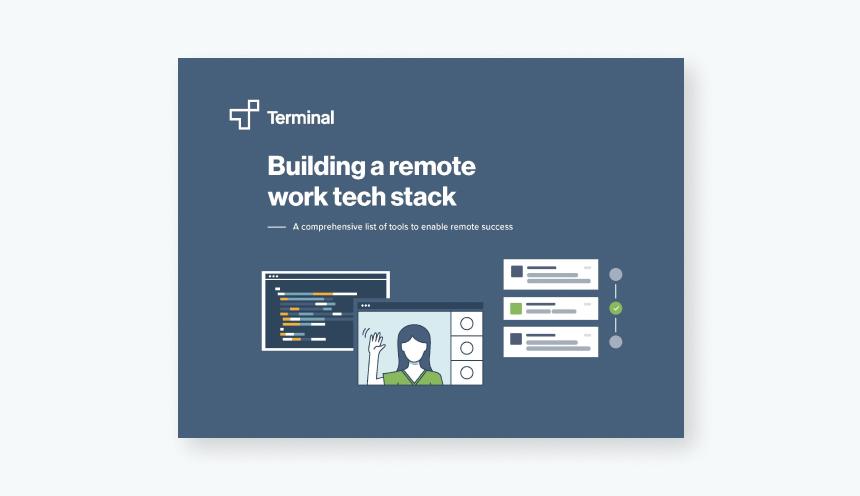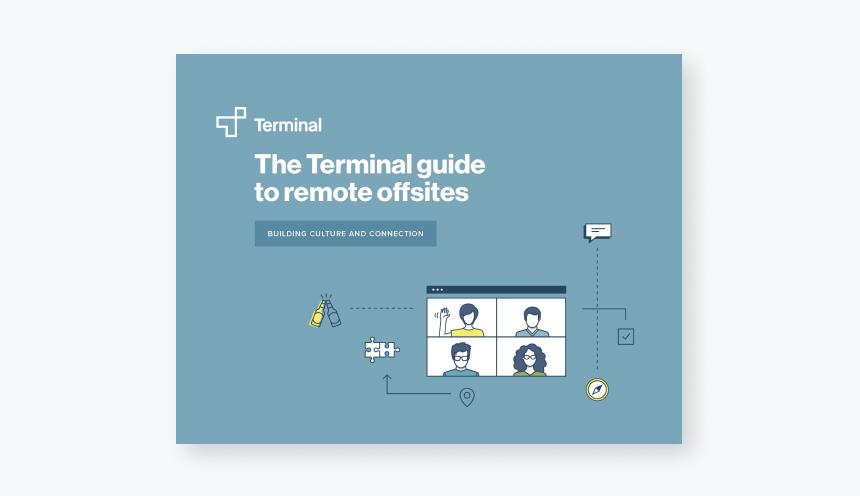
Remote how-to’s | Blog Post
Building a remote team? Our new guide breaks down the real (and hidden) costs
Linzi Nield
Share this post
COVID-19 has forced both workers and companies to reconsider their approach to remote work – not just how to navigate this temporary shift but also explore how and where they hire in the future. Put simply, many companies will look for global talent as they ease back into growth mode.
But, how much does it actually cost to build a global team from scratch? How quickly can you do it? At Terminal, we specialize in building, operating and scaling remote teams for companies of all sizes. We’ve heard these questions often over the years, and observed companies approach their remote work in a variety of ways, oftentimes incurring unexpected costs along the way. There are not nearly enough partners or transparency to help companies comprehensively build and execute their strategy.
That’s why we created The Cost of Remote: 34 Real (and Hidden) Costs to Consider when Building a Remote Team to help you and your team understand every step of the process.
Because how you go remote matters. For both time and money.
As companies continue to reassess their budgets given the economic impact of the pandemic, we expect many to continue their cost cutting measures. While there are countless benefits to building remote teams beyond lower compensation – access to more talent, diversified perspectives, less competition, and much more – it’s important to understand the true cost of employing and scaling your remote workforce.
Our guide breaks down every cost you’ll need to consider when scoping out a remote team, and outlines the timeline for each phase to give you an idea of how long it will take before your new remote employees are meaningfully contributing at your company.
A look inside the guide: Why companies go DIY + what to know
So, in this new era of distributed work and economic uncertainty, how should leaders approach and budget for remote scale?
The most successful remote companies prioritize attracting the best talent by offering full time work, benefits, and additional resources to improve retention and time to hire. While it’s easy to be lulled into building contract teams abroad to keep costs down, it’s not the only way and it surely isn’t the best way – especially if quality is important. Many companies realize this and pursue the “DIY” method so they have more control.
If this is a route you’re considering, we want to help you understand all of the costs involved – from hard costs like real estate to hidden opportunity costs to how all of it impacts your hiring timeline. In our guide we illustrate the costs for each phase of building a remote team: Market exploration, business setup, recruiting, employee support and retention, and ongoing administrative costs, and break down costs for each area:
- Hard Costs. These are the costs you’ve probably already considered, like travel time, salaries and equipment. We put estimates to these costs, to give you an idea of how much you can expect to spend at every stage of remote team building.
- Hidden Costs. These are all the costs that may not be obvious, like building your brand in a new market and employee retention. Scaling a remote team can come with a lot of expensive surprises, and we use our extensive experience in our guide to ensure that you won’t be caught off guard.
- Time to Team. Developing your own remote strategy means that it might take years before your team is hired, onboarded, and ready to work. It’s important to keep your timeline in mind as you front money for remote team building. It might be a long time before you see a return on investment.
There’s an alternative option.
Your choices aren’t just “dev shop” and “going it alone.” Partners like Terminal support companies through every step of hiring and retaining a team:
- High-quality recruiting, fast. Businesses that work with Terminal have teams fully hired and ramped up in less than six months; businesses that choose DIY solutions are typically just beginning the interview process in that same timeframe.
- Optimized market selection. We’ve built powerful, data-backed algorithms to help you find the perfect market for your remote team — saving you time, effort, and money.
- Flexible real estate options. Research shows there’s strong value in building community within co-located teams. Our campuses in Canada and Mexico offer a home away from home – and the flexibility employees want.
- Seamless payroll + benefits. Our experts also provide support with immigration, payroll, and other clerical tasks so you can focus on impactful projects and avoid wasting time on red tape.
- Employee-tested engagement + retention programs. Our peer-curated learning resources, career planning, and mentoring programs are employee-tested and have a track-record of increasing retention for the long haul.
As you continue to explore how to make remote work for your company and your budget, remember to arm yourself with information and set expectations accordingly. To learn more, explore The Cost of Remote guide from Terminal and our checklist to remote.


